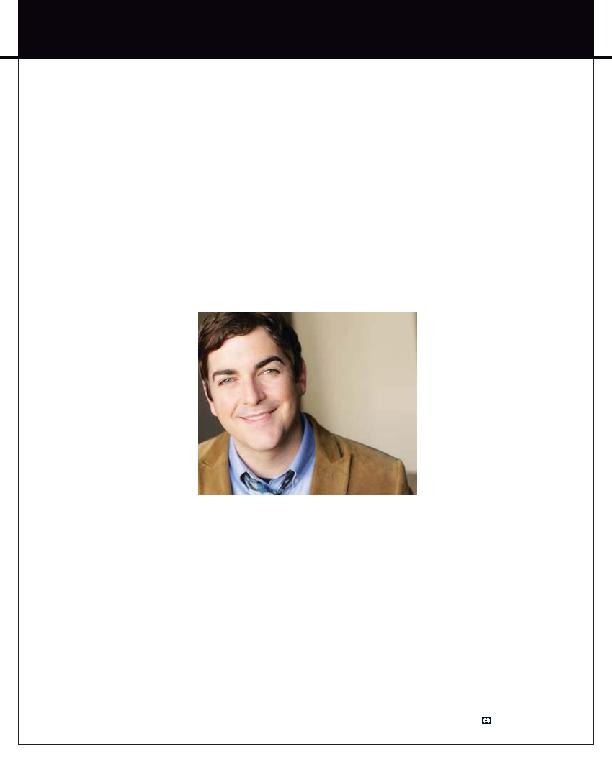
local theater in Wellesley, Mass., where Star
Wars was playing. As they emerged from the
cinema, Dowling looked up at his father and
said, "That's what I want to do." While his
dad probably thought he meant blow up
Death Stars, Dowling had been bitten
by the movie bug.
started in local theater and improv
comedy groups, then attended USC's
Theater program. It was there that he
met Joe Nussbaum and Joseph Levy,
with whom he created the short film
George Lucas in Love, a comedic take
on the genesis of Star Wars that
echoes the concept of Shakespeare in
Love. It was 1999, and Internet video
was in its infancy, but nerds will be
nerds so the short made its way
around Hollywood, eventually secur-
ing distribution both online and on
home video, where it spent two years
as the bestselling VHS movie on Ama-
zon.com. Needless to say, the three princi-
pals became hot commodities and it didn't
take long for Hollywood to come calling.
the Naked Gun variety. The story followed
Doc Brown and Marty McFly-type charac-
ters who start out in a comparatively inno-
cent '80s teen movie, and then are thrust
forward into a gross-out '90s teen movie.
The script had many fans, but unfortu-
nately went unproduced. Still, it provided
an alluring calling card that helped studios
keep Dowling in mind for future work. One
such studio was Sony, which bought his
spec, Outsourced. While this also went un-
produced, it landed on Hollywood's coveted
Black List and found an ardent fan in actor
brought on board This Means War, a project
Fox was developing with Smith.
production in 2010. That same year, Dowl-
ing's version of Just Go With It, Happy Madi-
convinced Adam Sandler to star in the film as
well as produce it. After years of false starts,
Dowling's career was finally taking off.
which actors respond. "I love language and
banter, and writing fun things for actors to
say," he explains. While he admits to over-
writing, he feels it's essential to finding and
conveying the flow and rhythm of the piece.
"When you're watching a movie and you're
in that moment, you can use a silence to
great effect, or an actor can convey every-
thing with a look. But in a script, these are
much more easily conveyed through dia-
logue. Then it goes into production, and you
have to go back and edit it down and realign
everything, which is also kind of fun."
ing uses a simple rule: "What is the version of
this story I want to see?" He begins with the
type of story he wants to tell, then figures out
the type of characters who would be on this
sort of journey. He feels his acting back-
him to better appreciate the role
each individual character plays in
the larger story. Once he knows all of
the characters and how they relate to
each other, he's able to move toward
finding the sort of set pieces that
form the meat of the film. "Of
course, you have to be able to
adapt," he continues. "Sometimes
you start with the characters, some-
times you start with an idea for a set
piece. It's just a matter of putting the
puzzle pieces together."
also managed to keep working as an
actor. He admits that his focus is al-
parts have come primarily through friends
or people he auditioned for years ago who
want him to be a part of a new project. Oc-
casionally, people will remark that he
should write himself a part, something
which he is very wary of. "You have to be
sensitive to its role in the story, make sure
it makes sense in the script overall. Because
if you're forcing it and just putting that
character or scene so you have something
to do, it takes away from the entire script."
Still, Dowling admits he'd love to act more
and hopes that with multiple projects com-
ing together and being released now, he'll
soon have the cache to get some passion
projects off the ground and onto the screen
-- meaning those Death Stars are safe for a
little while longer.